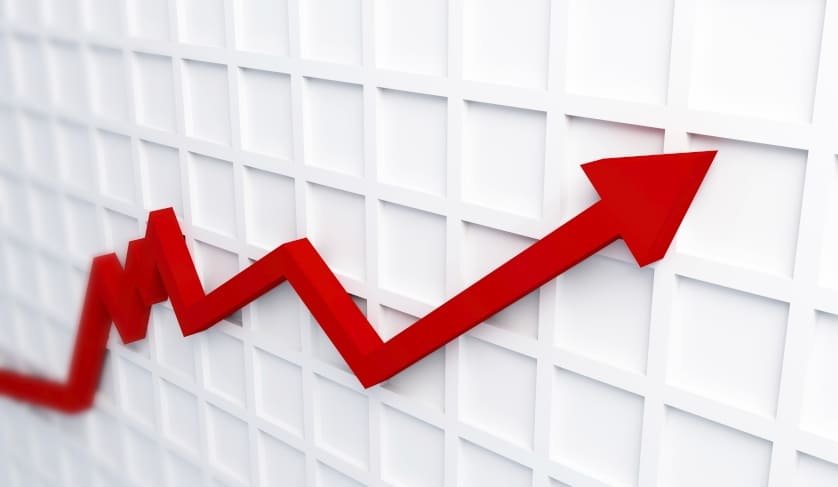Only one capital city saw positive value growth over February
One capital city stood out with positive value growth among the rest as dwelling values dropped in all, except another which remained steady over February, according to the latest CoreLogic data.

The CoreLogic Hedonic Home Value Index has found that combined dwelling values declined by 0.1 per cent in February 2018, more moderate than the two previous months’ drops of 0.3 per cent, but marking the first time since March 2016 that national values have fallen for five consecutive months.
Individual city values fell in all but Hobart, which climbed by 0.7 per cent, and Adelaide, which held steady. Darwin recorded the largest fall at -0.9 per cent. Sydney was next at -0.6 per cent. The rest all fell in the -0.1 per cent to -0.3 per cent range.
The divergence between capital city and regional markets continues, where the combined index fell by -0.3 per cent for capital cities and climbed for regional markets by 0.4 per cent.
Head of research, Tim Lawless, said excluding Hobart the softening becomes more evident when looking at the change over the past three months.
“Over the three months to February 2018, Adelaide and Hobart were the only capital cities in which values did not fall,” Mr Lawless said.
“Sydney, which has been the strongest market for value growth over recent years, saw the largest fall in values over the three-month period.”
Sydney’s decline has been followed by Simon Pressley, head of property market research at Propertyology, and sees it declining further.
“There’s ... nothing wrong with Sydney’s economy, is there? Best performance in Australia bar none. People have no problem getting a job, but still, will that job give enough income for cost of living, which includes buying and maintaining a home?” Mr Pressley said.
“Interstate migration figures from Sydney are showing a complete backwards trend; … Sydney is [decreasing].”
Following Sydney was Darwin, Mr Lawless said, which has seen signs of weakness over the last few years with falls over the quarter.
Mr Lawless said Hobart is the only city performing well, adding that values there are at a historic high.
Hobart is performing so well that it is on target to hit 20 per cent growth, he noted.
“We all know that Sydney had three really strong years there of around 15 per cent per annum. Hobart has already had two double-digit years and well on track for doing even better this year, and the rental returns are such that a typical property not only has spectacular growth, but the cost to hold it is zero.”
He said Hobart presented a “fantastic success story” for lots of real Aussie investors.
Pure Property Investment director, Paul Glossop, agrees.
“The sometimes-forgotten Hobart market has proven to be a fantastic investment area over the past 24 months,” said Mr Glossop, adding that in his estimate it is currently attracting as much as 25 per cent capital growth in some areas, and over 6 per cent gross rental yield.
“The Hobart jobs market has been firing of late with an 8.4 per cent increase in jobs over the last 12 months. There can often be a lag of 12 to 18 months before what’s occurring on the jobs front to direct property value increases, and we expect 2018 to provide a strong and consistent value growth along with low vacancy rates and strong rental yields.”
Mr Lawless said the index also shows regional markets are outperforming the capital ones.
“While most individual capital cities recorded declines in values over the past three months, in the regional areas of the country the results were very different - regional dwelling values increased by 0.9 per cent over the three months and values were higher in the regional areas of all states except for Western Australia.”
The index also found that annual trends show national dwelling values increased by 2.2 per cent, the slowest annual growth since August 2016.
Mr Lawless said the most noteworthy development was in Sydney.
“Dwelling values moved into negative annual growth for the first time since 2012, down 0.5 per cent over the past twelve months,” he said.
“The only other capital cities where values were lower over the previous 12-month period were Perth and Darwin, both of which have been in a sustained downturn since 2014.
“While the rate of decline has clearly tapered in Perth, Darwin dwelling values remain in a consistent downwards trend.”
By contrast the index found that regional New South Wales, regional Tasmania, regional Victoria, regional Northern Territory and regional Queensland all recorded annual increases.
But Mr Lawless said that while capital city dwelling values have been falling, rental rates have been on the up.
“In fact, rental rates are higher over the year in all capital cities other than Perth and Darwin and within all regional markets except for regional Western Australia.
“The markets experiencing the greatest increases in rents over the past year have been Hobart and regional Tasmania which is experiencing the strongest rental growth since the end of 2008.”
Mr Lawless said the upshot of this recovery is that gross rental yields are starting to repair after a long period of yield compression.
“At a national level yields have not been as high as they are currently in 11 months,” he said.
